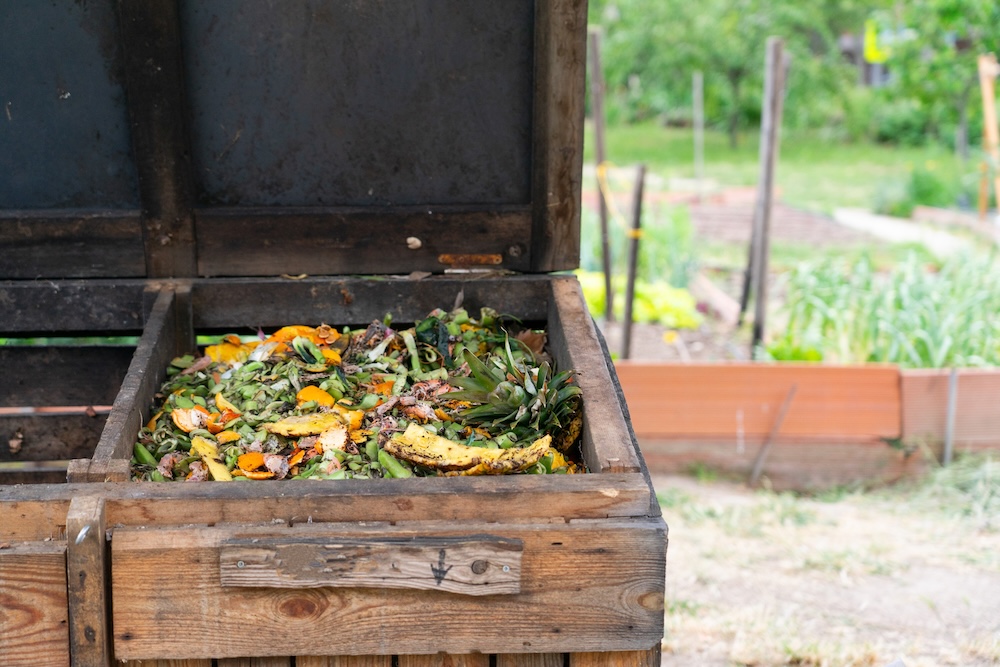Composting is one of the easiest and most rewarding ways to reduce food waste, enrich your soil, and live more sustainably. But if you live in an area where wildlife is present — whether it’s raccoons, foxes, bears, or rodents — an open compost pile can become an unintended buffet.
The good news? You don’t have to choose between composting and keeping animals away. With the right setup and habits, you can turn your food scraps into nutrient-rich compost without inviting unwanted visitors.
This guide walks you through everything you need to know about safe, wildlife-proof composting for beginners.
Why Composting Attracts Wildlife
Wild animals are opportunistic eaters, and compost piles can smell like an easy meal. Common culprits include:
- Raccoons and opossums scavenging for fruit, bread, or leftovers
- Rodents attracted to grains and food scraps
- Bears seeking high-calorie sources in rural or forested areas
- Insects like flies and ants if compost isn’t balanced properly
These animals don’t just take food; they can scatter scraps, damage bins, and become dangerously habituated to human-provided food sources.
The Key to Wildlife-Proof Composting
The main principle is to control access and control odor. If wildlife can’t smell it or reach it, you’ve eliminated most of the risk.
1. Choose the Right Compost Bin
Open piles are easy but offer no protection. If wildlife is a concern, invest in a closed-bin system.
Best options for wildlife-prone areas:
- Tumbler bins: Elevated and sealed, these are difficult for animals to access.
- Rodent-proof stationary bins: Made from wood or metal with locking lids.
- Burying or in-ground digesters: Break down food scraps underground, making them less detectable.
Avoid flimsy plastic bins that can be chewed through or cause microplastic contamination.
2. Location Matters
Place your compost bin away from forest edges, fences, or dense shrubbery where wildlife can hide. In bear country, position it at least 100 feet from your home and avoid placing it near outdoor grills or bird feeders.
Choose a spot with good drainage and partial sunlight to help speed decomposition and reduce odors.
3. Balance Your Greens and Browns
An unbalanced compost pile (too many “greens” like food scraps and grass) can produce strong smells that attract animals. Aim for a 2:1 ratio of browns to greens.
- Greens: Fruit and vegetable scraps, coffee grounds, fresh grass clippings
- Browns: Dry leaves, shredded newspaper, cardboard, straw
Every time you add food scraps, cover them with a thick layer of browns to mask odors.
4. Skip Certain Foods
Some foods are more likely to lure wildlife and should be avoided:
- Meat, fish, and bones
- Dairy products
- Oily or greasy foods
- Sweet fruits like melons in bear-prone areas
These can take longer to break down, smell stronger, and attract scavengers from far away.
5. Bury Food Scraps in the Pile
Rather than leaving scraps on the surface, dig a small hole in your compost, add the scraps, and cover with several inches of browns. This reduces odors and makes it harder for wildlife to find them.
6. Use a Kitchen Scraps Container
Keep a small sealed container indoors to collect scraps. Empty it into your outdoor bin once a day or every few days. This limits the number of times you open your bin, helping control odors.
7. Keep Moisture in Check
Too much moisture can create strong, sour smells that draw pests. Your compost should be as damp as a wrung-out sponge. If it’s too wet, add more browns like shredded cardboard or leaves.
8. Turn Your Compost Regularly
Aerating your compost speeds up decomposition, reduces odors, and keeps the pile hot enough to discourage pests. With tumbler bins, this is as simple as rotating the drum every few days.
9. Clean Around the Bin
Fallen scraps or spills around the bin can attract wildlife even if your compost is sealed. Keep the surrounding area clean and free of loose debris.
10. Consider Extra Protection in Bear Country
If you live in an area with high bear activity, you may need additional measures:
- Use bear-resistant certified compost bins
- Secure bins with locking mechanisms or straps
- Only add food scraps during colder months when bears are less active
In some regions, local regulations or guidelines may apply to composting in bear habitats. Always check your local wildlife agency’s recommendations.
Indoor and Alternative Composting Methods
If outdoor composting feels too risky, you still have options:
- Bokashi composting: Uses a fermentation process indoors to break down food scraps, including meat and dairy.
- Worm bins (vermicomposting): Efficient indoor composting with red wiggler worms — great for apartments.
- Electric composters: Countertop devices that dehydrate and break down scraps into a soil amendment in hours.
These methods keep food waste indoors or in sealed systems, completely removing the wildlife attraction risk.
The Environmental Payoff
Composting keeps organic waste out of landfills, where it would otherwise produce methane — a greenhouse gas more than 25 times more potent than CO₂. It also creates nutrient-rich compost that improves soil health, reduces the need for synthetic fertilizers, and supports plant growth.
By composting responsibly and keeping wildlife out, you’re not only helping the planet but also protecting local ecosystems from the risks of human-wildlife conflict.
Final Thoughts
Wildlife-proof composting is entirely possible with the right setup and habits. Choose a secure bin, balance your greens and browns, avoid risky foods, and stay consistent. The reward is a steady supply of rich compost for your garden, a lighter trash bin, and the satisfaction of knowing you’re doing right by both the planet and its creatures.









Reader Interactions